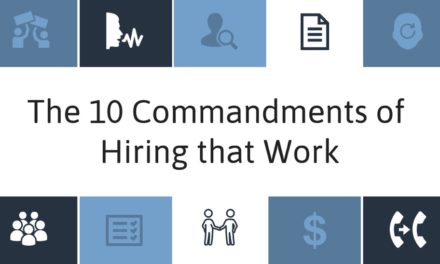Even with the massive workplace changes due to the Coronavirus pandemic, do you still have “old school” Senior Leaders who refuse to allow people to work from home (WFH) or acknowledge that it’s a viable option for running a business? If so, is there a way to coach them to “see the light?” Maybe, or maybe not. But here’s your best shot for winning them over.
As mentioned frequently in the press, the clear evidence about the benefits of telecommuting is very compelling. Step 1 may be as simple as showing managers the statistical ROI-based proof that working from home makes sense for both employer and worker. For example, having a good WFH policy is linked to lower absenteeism and higher engagement. A Gallup study proved that not only do virtual employees work an average of four hours longer per work week than people who go to the company site, but also that these workers are more engaged (32% versus 28% engaged). The ability to work from home can also be a powerful way to attract top talent, especially Millennials who value autonomy and scheduling flexibility. With this in mind, it’s not surprising that 82 percent of Fortune Magazine’s “100 Best Companies to Work For” already have virtual work policies.
When old school managers learn the facts about working from home and they still can’t support it, step 2 is to assess whether the real issue is TRUST.
Terrific “new school” virtual managers don’t beat around the bush when it comes to the trust issue; they tackle it boldly and directly by doing one simple thing: They let go. Extraordinary virtual managers know that in order to let go and fully trust their employees, they must be very scrutinizing and careful during the talent selection process. By hiring only people they innately trust from the get-go, great virtual managers start out on the right foot with new hires and support their autonomy. And if working virtually is only a privilege for tenured employees, these managers choose their most trustworthy employees to work from home.
Virtual managers who cannot let go and continue to micro-manage, annoyingly checking in or checking up on their remote employees, will damage trust at their organization, and they have no one to blame but themselves. (Likely, these managers hover over their team in the same manner even when working on site.)
In this situation, they should turn the reflective mirror back on themselves and consider whether they have a trust issue or a hiring and talent acquisition problem. Simply put, managers are wary of trusting employees for two possible reasons:
- The manager is paranoid.
- Employees evoke little reason to be trusted.
In either case, the manager is at fault. It’s quite possible they hired the wrong people, which shows an even deeper problem. If managers cannot hire the right people and trust them, then maybe they are in the wrong position. Such managers should be re-cast into different roles that do not have virtual direct reports and/or hiring responsibilities.
Source: Gallup - 2013 State of the American Workplace study
This blog is inspired from, The Virtual Manager [AF1] by Kevin Sheridan, published by Career Press.
[AF1]Link http://kevinsheridanllc.com/books/
Latest posts by Kevin Sheridan (see all)
- The Importance of Adaptability In Your Next Hire - October 19, 2022
- The 12 Toughest Interview Questions (And How To Best Answer Them) - August 3, 2022
- How To Attract & Keep Readers - July 17, 2022











